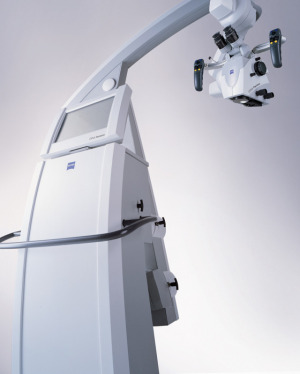by
Keith Loria, Reporter | September 14, 2010
This report originally appeared in the August 2010 issue of DOTmed Business News
If you were having a debate about the leading cola companies, you would only concentrate on Coke and Pepsi. If you were looking at the leading computer operating systems, then the rivalry would be between Apple and Microsoft. Surgical microscopes, share the same type of rivalry outline. There are two companies always mentioned in any discussion about the leaders in the industry- Leica Microsystems Inc. and Carl Zeiss Meditec, Inc.
Over the last couple of years, the surgical microscope has seen an enormous innovation push, moving from a classical optical system to one that relies heavily on digital technology.



Ad Statistics
Times Displayed: 365455
Times Visited: 7047 Quality remanufactured Certified Centrifuges at Great prices! Fully warranted and backed by a company you can trust! Call or click for a free quote today! www.Centrifugestore.com 800-457-7576
"The key message is that we are moving from a glass and brass microscope to something that is really a software driven, digital visualization platform," says Dirk Brunner, vice president of sales and marketing for Zeiss. "Certainly, a part of it is very good optics, but it really goes beyond that."
Surgical microscopes are commonly used for neurosurgery, ophthalmology, ENT, plastic reconstructive surgery, urology, OB/GYN, and dentistry.
"A lot of exciting innovation is driving the industry right now," says Betsy Schwartz, director of marketing of the surgical division, North America of Leica Microsystems. "There are new neurosurgical applications including fluorescence technology, high-definition recording, integrated Apple applications, and new ophthalmic surgical microscopes."
Considering neurosurgery, which has always been a significant technology driver in the microscopic field, the buzz words this year are fluorescence, illumination, navigation, and integration.
Fluorescence technology
Neurosurgery involves some of the most difficult and complex procedures in medicine. Therefore, one of the most important and innovative features to become available in microscopic technology concerns vascular fluorescence, which is particularly important in neurosurgery to develop increasingly safe, gentle and efficient techniques, which do not impair any vital functions in the brain.
Leica Microsystems has developed an alternative to traditional fluoroscopy integrated with its neurosurgical microscopes. This technology involves the use of a drug in conjunction with a microscope filter that illuminates blood flow to confirm blockage in aneurysms during neurosurgery and to ensure there is blood flow in reconstructive surgery. This is important because now, instead of wheeling a fluoroscope or radiological imaging device into the operating room, the microscope itself can do the job of checking to see if surgery is complete in much less time.

